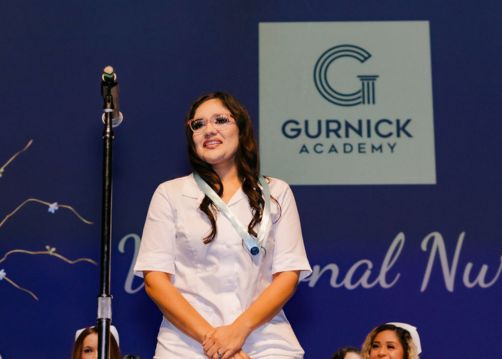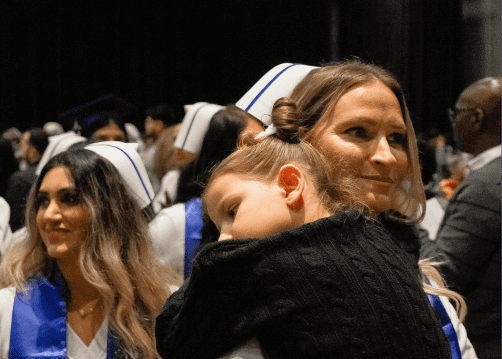Book Highlights of Educating Nurses: A Call for Radical Transformation, Part I
Date: August 30, 2021
Below is an excerpt from Educating Nurses: A Call for Radical Transformation as seen on the Carnegie Foundation for the Advancement of Learning official website. (Book authors: Patricia Benner, Molly Sutphen, Victoria Leonard, and Lisa Day)
Educating Nurses: A Call for Radical Transformation explores the strengths and weaknesses in nursing education and the external challenges the profession faces. It identifies the most effective practices for teaching nursing and persuasively argues that nursing education must be overhauled. Indeed, the authors call for radical advances in nursing licensure pathways and a novel understanding of the curriculum. Educating Nurses offers recommendations to realign and transform nursing education based on extensive field research conducted at a wide variety of nursing schools and a national survey of teachers and students administered in cooperation with the National League for Nursing (NLN), the American Association of Colleges of Nursing (AACN), and the National Student Nurses’ Association (NSNA). Educating Nurses is the fourth volume in a series of comparative studies by the Carnegie Foundation that examines how the members of different professions are prepared for their responsibilities in the communities they serve.
Overview of Nursing Education

Nurses, the largest healthcare professional group, spends the most direct time with patients making their role in health outcomes critical. They conduct most bedside monitoring, provide daily primary care, and teach aging patients to manage multiple chronic illnesses. Nurses also work in widely diverse settings, including specialized, acute hospital bedside care, in-home and long-term nursing care, and working in schools and the community.
While nurses are charged with caring for patients with increasingly complicated diagnostic and treatment regimes, they must learn and work under less-than-optimal circumstances. Currently, healthcare institutions are not well designed for good nursing and medical practice—or education. Nurses and nursing students must function within the complicated, and many would say chaotic and dysfunctional U.S. healthcare system. To further complicate matters, since 1998 there’s been a growing shortage of nurses, causing 93 percent of hospital-based registered nurses to report a lack of sufficient time and staff to maintain patient safety, detect complications early, and collaborate with other health care team members. To meet current and projected shortages, nursing education programs need to increase their capacity by approximately 90 percent. However, these programs are faced with a severe shortage of faculty, making it difficult to expand; and the already small pool of qualified faculty is rapidly shrinking—almost a third are over the age of 55 and there is a dearth of baccalaureate-level nurses eligible to enter graduate programs. This has caused a sixfold increase in the number of applicants denied admission to nursing schools since 2002.
As faculty retire, nursing schools lose some of their most experienced teachers and face the challenge of finding and mentoring new faculty. Retention of novice teachers is also problematic as they can earn a higher salary in practice; and while those new to teaching often bring enthusiasm and up-to-date clinical knowledge, few graduating with master’s and doctoral degrees have been prepared for teaching.
For the past 30 years, faculty and administrators of graduate nursing programs have focused their attention on developing robust nursing research, ignoring the need to prepare new faculty to address the specific educational demands of teaching the complex practice of nursing. Also, unlike their fellow educators preparing lawyers, clergy, physicians, and engineers, nursing faculty and preceptors have relatively little time to build a robust knowledge base and guide students in professional formation.
There is also disagreement over what education nursing practice requires, as the multiple points of entry to the profession indicate. While the American Organization of Nurse Executives and the American Association of Colleges of Nursing have called for a mandated baccalaureate degree as a point of entry to nursing practice—a recommendation the ANA made in 1965—and studies have demonstrated that better patient outcomes are achieved in hospitals staffed by a greater proportion of nurses with baccalaureate degrees to those with associate degrees, there has not been the political will to make it so. Even more serious than the different points of entry to the practice are the quality gaps in the educational preparation and teaching development of nursing faculty seen across all types of nursing programs.
Despite these enormous external challenges facing nursing practice and nursing education, the authors argue changes in nursing education must come now from within the schools and the profession. As nursing education copes with these mounting pressures, the risk is to lower standards and aspirations; but at such a time of crisis, it is especially critical to have a clear vision of what high-quality nursing education is and what programs must do to meet those standards.
The Study
The Carnegie National Nursing Education Study examined three dimensions of nursing education and formation: 1) the learning of theory and scientific methods; 2) the mastery of skillful practice, and 3) the formation of professional identity and agency. These “three apprenticeships” are integrated in the identity and actions of the professional nurse; thus, the research team explored the relationship among the apprenticeships throughout the study’s two stages.
In the first phase of the study, the research team conducted site visits to nine geographically and academically diverse schools, including a community college, a private liberal arts college, and a graduate-level state university focused exclusively on the health care professions. The programs examined ranged from pre-licensure to master’s-entry level programs, to those that grant the diploma, the associate degree, or the baccalaureate degree (both fast-track and traditional programs).
In preparation for the site visits, extensive telephone interviews were conducted with administrators and faculty. On-site, the team observed classes and again interviewed administrators and faculty, as well as staff and students. Students were also observed in clinical settings and during skills and simulation laboratories.
To complement the site visits, the second phase of research included a national survey of faculty and students, conducted in collaboration with the American Association of Critical Care Nurses (AACN), National League of Nursing (NLN) and National Student Nurses’ Association (NSNA)—leading nursing organizations. The findings from these surveys were incorporated into the report, along with student and faculty comments.
Key Observations or Findings
A significant finding from the study is that today’s nurses are undereducated for the demands of practice. Previous researchers worried about the education—practice gap; that is, the ability of practice settings to adopt and reflect what was being taught in academic institutions. Now, according to the authors, the tables are turned: nurse administrators worry about the practice—education gap, as it becomes harder for nursing education to keep pace with the rapid changes driven by research and new technologies. Three other key findings informed the authors’ recommendations. These include:
- U.S. nursing programs are very effective in forming professional identity and ethical comportment.
While nursing education helps students develop a deep commitment to the values of the profession, there was a significant difference between what educators and students articulate as their understanding of ethical comportment and the actual teaching toward it. Educators and students often described “ethics” primarily in terms of learning the principles of bioethics; yet, in the process of teaching and learning in clinical situations, they actually focused on everyday ethical comportment, on becoming good practitioners, and on continuously improving their practice, always with the patient in mind.
- Clinical practice assignments provide powerful learning experiences, especially in programs where educators integrate clinical and classroom teaching.
One strength of U.S. nursing education is that students work directly with patients and the health care team. Moreover, as they progress through their programs, they are given ever-increasing responsibilities in clinical situations. In describing how they learned to become a nurse or “think like a nurse,” students invariably pointed to clinical situations. However, when the clinical and classroom instruction were not integrated, students reported a fragmented experience.
- U.S. nursing programs are not effective in teaching nursing science, natural sciences, social sciences, technology, and the humanities.
The lack of rigorous scholarship demanded of nursing students in these areas, and a failure of nursing education to connect the liberal arts to the development of sound nursing practice, was a sharp contrast to the skillful and effective approaches used in clinical situations. Material in these courses was typically delivered through standardized lectures. Developing knowledge that is to be used in a complex, high-stakes practice such as nursing calls for an ongoing dialogue between information and practice, so that students build an evidence base for care and thus learn to make decisions about appropriate interventions for a particular patient.
Recommendations for Programs
The authors suggest that nursing educators make four shifts in their thinking about teaching and in their approaches to fostering student learning.
- From a focus on covering decontextualized knowledge to an emphasis on teaching for a sense of salience, situated cognition, and action in particular situations.
Many teachers organize their classes around lists of abstract theory, giving their students little or no indication about how to integrate the knowledge they present in a practice context. Instead of presenting flat representations of taxonomic structures or “cataloging,” nurse educators should help students learn to use nursing knowledge and science.
- From a sharp separation of clinical and classroom teaching to an integration of the two.
At all the schools visited, there was a sharp divide between the classroom and clinical teaching. For instance, when students learn to measure blood pressure, it’s often in a decontextualized situation where the measurements are taken of healthy individuals. While a good starting point, this does not prepare a student to make a clinical assessment about a hypertensive patient in labor and delivery. When teachers provide only simple, stripped-down examples or test students on elemental competencies, they may not be helping students to prepare for diverse clinical situations.
- From an emphasis on critical thinking to an emphasis on clinical reasoning and multiple ways of thinking.
Critical thinking alone cannot develop students’ perceptual acuity or clinical imagination, and cynicism and excessive doubt are often the by-products of the over-use of critical thinking. Nurses need multiple ways of thinking, including clinical reasoning—the ability to reason as a clinical situation changes, taking into account the context and concerns of the patient and family—helping nurses to capture a patient’s trends and trajectories. Clinical imagination, which requires students to grasp the nature of patients’ needs as they change over time, is also needed, as well as critical, creative, and scientific reasoning.
- From an emphasis on socialization and role-taking to an emphasis on formation.
Formation includes those changes in identity and self-understanding that occur in moving from a layperson to a professional. Nursing education must make more intentional use of these transformational experiences, focusing on the formation of professional identity rather than on socialization. Experiential learning environments across the nursing curriculum are also needed to support formation.
Recommendations for Policy Change
Results from the study are a set of specific policy recommendations. These will require that the entire nursing profession work together to transform nursing education. For Recommendations for Policy Change, read Part II.
________
Citation
1 Benner, Patricia, Molly Sutphen, Victoria Leonard, and Lisa Day. 2010. “Published on Carnegie Foundation for the Advancement of Teaching Book Highlights from Educating Nurses: A Call for Radical Transformation Book Highlights from Educating Nurses: A Call for Radical Transformation.” Carnegie Foundation for the Advancement of Learning.
http://www.njni.org/wp-content/uploads/2014/12/5-NJNI-JuneDesignRetreat-Carnegie-Foundation.pdf
Downloaded from: http://archive.carnegiefoundation.org/publications/elibrary/educating-nurses-highlights.html







